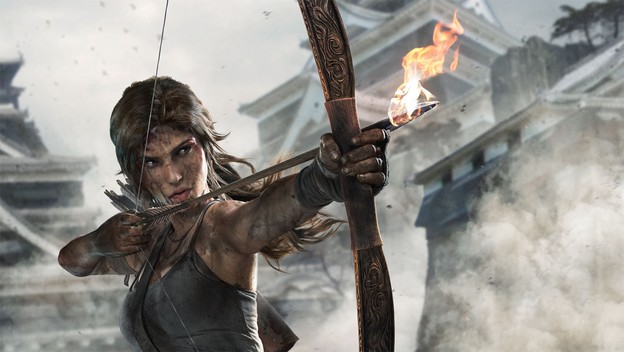I’ve posted a whole lot of articles about why we should strive for more equal gender representation in games, but I admit that most of these articles are morally motivated; the idea being that women aren’t equally or fairly represented in games and so the “right” thing to do would be to even up those styles of representation. These, of course, usually degrade into flame wars and insults pretty quick in the comments, as I’m sure you know that individual moralities differ greatly from the gaming community.
So today, I’m throwing morality out the window, and instead examining this issue from America’s favorite standpoint, that of the cold desire for profit, the ever enthralling chase of the almighty dollar. Does it make business sense for games to cater to women? I’m not even talking about equal representation here; I’m saying, does it make more sense, by the numbers, for women to be looked at as a primary gaming demographic?
Since I’m not a fan of simply stating an opinion without any hard evidence to back it up, let’s look at the numbers. A recent survey conducted by Rosalind Wiseman and Ashly Burch surveyed high and middle school aged boys and girls in order to take the pulse of the attitudes of young gamers today. These are also the prime demographics that many game developers aim for, in addition to the young adult demopgraphic, and it’s these gamers who will soon be the young adults of our future, purchasing our Call of Duty s and Battlefields . Their findings were presented at GDC this year. What did they say about young gamer’s attitudes toward gender in games?
Well, the results were actually rather interesting. When asked about what gender they prefer playing as, 46% of high school boys said they had no preference at all. 39% said they would rather play a game with a male protagonist and 15% said they would actually rather play a game with a female protagonist.
However, the survey of high school girls says a very different story. 60% of them preferred to play as a female character, while 34% had no preference, and only 6% preferred playing as male.
This means that a game with a male protagonist meets the primary preference of 85% of all men and 40% of all women. Meanwhile, a game with a female protagonist appeals to 61% of all men, for a 24% decrease in male players met, in exchange for appealing to a whopping 94% of all women, for a 54% increase!
And before you go saying “girls only play casual games,” their previous year’s survey showed that girls play, essentially, the same genres that guys do, with only slight preferences toward puzzle games and RPGs.

For the 24% decrease in male appeal to be outweighed by the 54% increase in female appeal, in terms of simple money making strategies, there would have to be over twice as many men as women who are playing popular games, and all recent surveys by the ESA and EEDAR say that ratio is more like half and half.
There is a lot of other interesting evidence that the survey had to show as well. For example, middle school boys had a 59% preference of playing as a male character, a 7% preference of playing as a female character, and a 34% tendency toward no preference, showing that as guys grow up, their gender preference weakens. The older they get, the less they actually care about video game character gender. This was supported by another survey question, which asked whether or not gamers would or would not play a game based on gender alone. 20 percent of boys said yes, but 28 percent of girls said yes.
Similarly, middle school girls had a 46% preference toward female protagonists, a 6% preference toward male protagonists, and a 48% tendency toward no preference. So the inverse is true for the female gaming populace. They start more neutral and as they grow older, they find themselves having more of a preference for games featuring their own gender.
Going deeper into the data, 69% of all boys said they identified as being a “gamer” while 65% of all girls said they did not identify as being a gamer. However, when game playing times, genres, and habits were examined, guys and girls were roughly equal. They even displayed roughly the same level of game knowledge. Girls were doing nothing different than guys in terms of behavior, but fewer identified as a gamer themselves. The reasons for this lack of identity were not researched, though I would hazard a guess that they either felt unwelcome, or otherwise had social pressures put on them to not identify with the label. But that’s a discussion for another time, as right now we are interested in making money.
An incredible 87% of high school aged boys surveyed said that they want to see more girls play games. Not only that but 55% of all guys surveyed said they actively want to see more female heroes in games, with only 9% disagreeing and 37% being completely neutral. Finally 56% of guys surveyed believe that women are treated like sex objects in games.
So what do these numbers tell us? Well, our assumptions of what sells to young people may be mistaken. Young boys and girls game about equally, but their preferences differ drastically. By sheer numbers, more of the gaming community can be reached with strong female protagonists than male ones. So if we really want to maximize profit, progressivism is the way to go. The voices that work against progressivism, while loud and angry, are statistically in the minority. Numbers don’t lie.
What do you think? Check out the full survey results here , and let us know what you think the numbers tell us in the comments.
